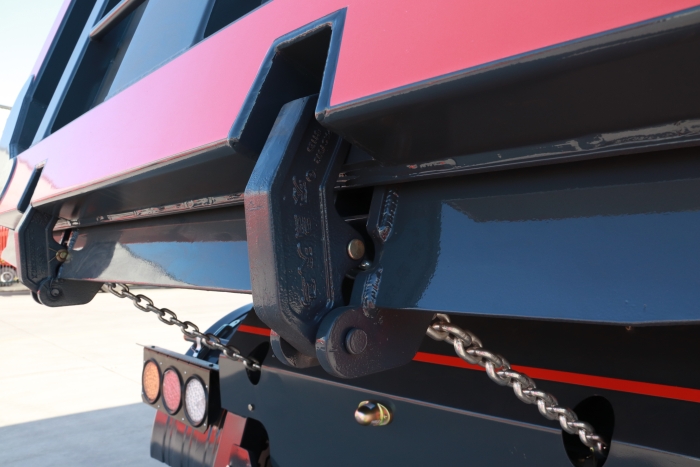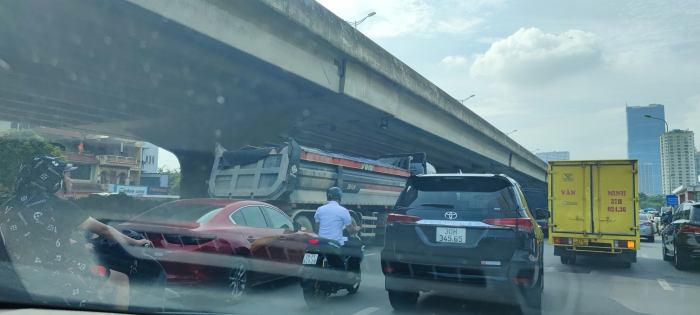- PRODUCTS
- SOLUTION
- SERVICE
- NEWS
- ABOUT US
To safely transport hazardous materials with fuel tank semi trailers, ensure compliance with DOT regulations, conduct pre-trip inspections, maintain equipment every 10,000 miles, and train drivers thoroughly.
Careful attention must be given to the safety of transporting hazardous materials. This paper will focus on the compliance requirements and the best practices employed in fuel tank semi trailers. Both federal and state guidelines have precise criteria about transporting hazardous materials. These include vehicle movement standards, material handling standards, and safety procedures during emergencies.
Identify Hazmat Classes and the Risk
Hazardous materials are divided into nine classes, starting from explosives (Class 1) to miscellaneous hazardous materials (Class 9). Fuel trailers fall into Class 3, which is about flammable liquids. It is important to realize the risk associated with transporting fuels like gasoline and diesel. The two are dangerous as they are susceptible to catch fire anytime and even explode if not properly handled.
Equip Trailers with Relevant Safety Features
Nowadays, fuel tank trailers come fully equipped with the relevant safety equipment to reduce risks. These include spark arrestors, grounding systems, and flame suppressants . Detachable fault valves (DV) or a wage operated shutoff to be used from a distance of 50 feet from the fuel trailer are mandatory . This will assist in shutting off any pipeline where there is a catch of petroleum products.
Train and Certify SHMHA
Every person intending to handle hazardous materials go undergoes comprehensive training and certification. The Department of Transportation stipulates training requirements, which specify the material identification, the proper method of handling emergencies, as well as the most appropriate safety procedures.
Regular Inspection and Maintenance Schedule
Fuel tank semi trailers should be kept in perfect condition. This will involve a daily pre-trip and post-trip inspection by the driver, in addition to a monthly inspection by a certified professional. Detailed semi-annual check is highly required and should be done by either the State’s Department of Transportation or the Federal Department of Transportation.
Develop Comprehensive Emergency Response Plan
Good emergency response plans coupled with a quick response can help limit the damage caused by any spill or trailer catching a fire. This will involve devising an immediate communication method to the local emergency responders and regular drills by the SHMHA at various times to simulate oil spillage, fires, and other hazardous materials spills. Remember to acquire relevant spill containment kits.
Adopt Technology in the Improvement of Safety
Fuel trailers are advantaged to use technological equipment to enhance safety. Modern trailers have a remote monitoring equipment, optic fibers temperaturemeasurement for driver feedback, remotely operated emergency shutoffand active GPS monitoring and alarm in case of signal loss for a prolonged time.

The safe transfer of hazardous materials begins with the proper labeling and packaging, the phase in the chain that cannot be overemphasized. The federal regulations define packing group I, II, and III. According to federal regulations, each container must display the appropriate hazard class symbol along with a corresponding description. The information provided should be comprehensive and direct to enable anyone who comes into contact with the shipment to understand the hazard and know how to handle the material properly. Some of the key points to consider are:
Accurate classification
It is necessary to properly classify the hazardous material according to the DOT’s Hazardous Materials Table. For example, gasoline is classified under UN 1203, which requires it to be labeled as a Class 3 flammable liquid . Proper classification and labeling enable the application of an appropriate label that depicts what that material poses a risk. For the flammable liquid, the label will indicate that the material can catch fire, while for the battery example, the label will indicate that the material is acidic and can be corrosive to other materials.
Packaging standards
Any hazardous material must meet the required standard of packaging to prevent leakage or spillage. Containers for flammable liquids including those in fuel tank trailers must pass pressure tests, drop tests, and leak proofness tests. The containers should be able to sustain the rigors of transit, which includes vibration, changing temperature, and being accidentally dropped.
Label placement and visibility
Labels should be placed in a manner that is visible from any direction. The label on at least four sides of the container will be ideal. The label should not weather and should still be legible at the end of the journey. This is because, in case of emergency, the emergency responders need to know the nature of the hazard that might explode or caused the accident before wading into the accident scene. Regulations for labeling and packaging hazardous material can change, and it is essential for each company to know the latest information. Audits are conducted to ensure compliance. Not only does compliance keep a company from getting sued, but it also keeps hazardous materials safe.Default

Hazardous Materials Transportation Fifteen Points
One of the critical points of hazardous materials transportation is the compatibility of the materials with each other and with the container itself. Hence, one of the most crucial conditions is maintaining the stability of relative positions of materials in the containers. It is sometimes easy to distinguish incompatible materials by smells and stains. Here are several conditions:
Chemical properties of the ingredients.
l Different classes of materials. Oxidizers should never be transported with flammable liquids, such as gasoline, as it easily supports or starts the fire. Moreover, it is also prohibited to transport oxidizers with poisonous items, explosives, and radioactive materials.
l Types of container materials in relation to contents. For instance, acids, such as hydrochloric acid, should not be stored or transported in a container that will corrode. The best container materials are high-density polyethylene and other types of plastic, which are resistant to acids.
l Environmental conditions, such as temperature and humidity. These can affect the decomposition of certain materials. Hence, matter should be in stabling toxic and contagious conditions. This is best regulated with a conditioning system, which can adjust within short periods of time.
l The absolute stability of the container. Certain decomposable items can cause structural damage to the container and lead to leaks through the body and nodes. This is regulated by limited vibrations, which can be achieved with profiling and cushioned beds of trails and anti-vibration mounts on the structure.
An important factor that affects the safety of the transport of hazardous materials in fuel tank semi trailers is effective maintenance. A regular schedule of maintenance would ensure that all parts and components of the trailer work correctly and safely, which reduces the risk of accidents. Regular maintenance intervals should be established, as well as daily pre-inspections, recommendations for specialized equipment checks, and record-keeping. The maintenance should be conducted according to the following schedule:
l Detailed inspection should be conducted every 10,000 miles or six months. Detailed inspection should cover brakes, lights, horns, emergency equipment, tires, and all other parts of the trailer that ensure its safe operation. The above interval is the maximum, as more frequent inspection may be mandated by the regulatory requirements.
l Before each trip, the driver should inspect all parts of the trailer, checking its systems and components for correctness and functionality. The driver should check fuel systems, brakes, tires, and lights. In case of problems, the equipment should not be used for transportation.
l When transporting hazardous materials that are likely to damage the environment and respond to air, specialized equipment should also be checked. This would include testing tank integrity and construction as well as the equipment of spill containment, tanks venting, and closure. Such equipment inspection should be conducted by specialized personnel that is also aware and knowledgeable about the specifics of hazardous materials transfer and handling.
l All checks and inspections should be recorded, as regulators request proper documentation of the trailer maintenance. The records may also help detect recurring problems.